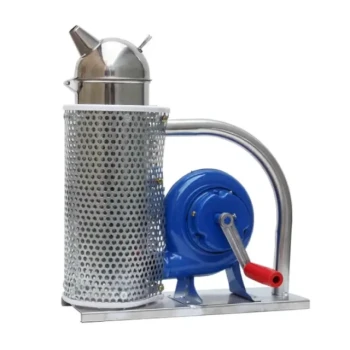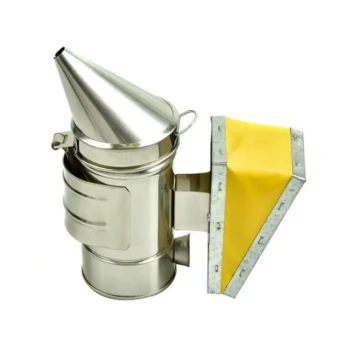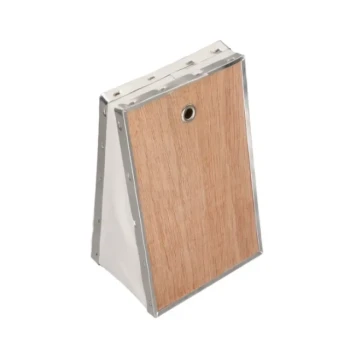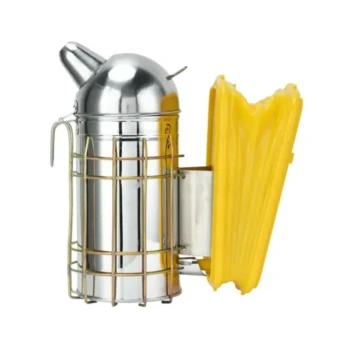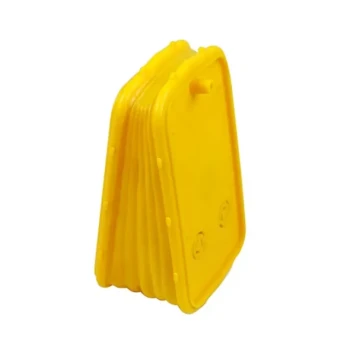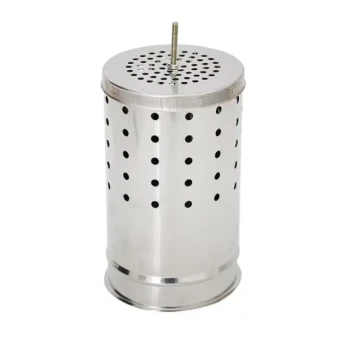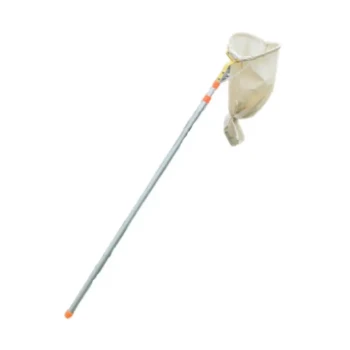The best fuel for a bee smoker is one that lights easily and produces a thick, cool smoke without generating harmful sparks. While many natural materials work well, raw cotton fiber is widely considered the top choice because it excels at producing a gentle, cool smoke that effectively calms bees without posing a risk to the colony or the queen.
The most effective bee smoker fuel isn't a single specific material, but rather any clean, dry, natural substance that smolders consistently. Your goal is to create cool, dense smoke to calm the bees, not hot, thin smoke that could harm or agitate them.
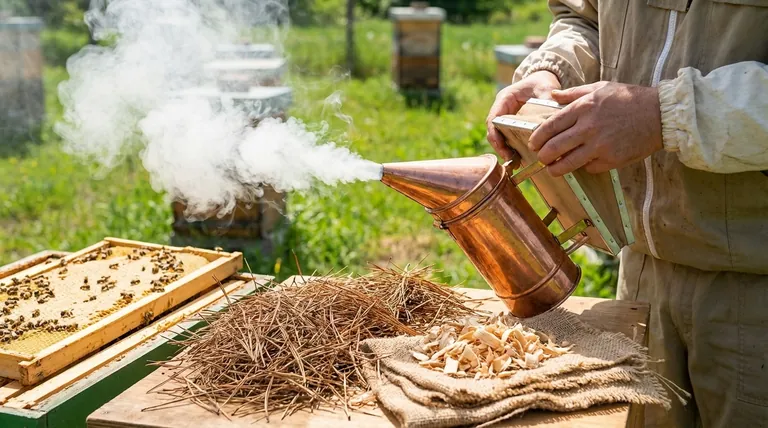
Why "Cool Smoke" Is the Critical Factor
Understanding the purpose of smoke is key to choosing the right fuel. The smoke masks the bees' natural alarm pheromones, preventing a colony-wide defense response. It also encourages them to start consuming honey, a natural reaction to a potential threat (like a forest fire) that makes them more docile.
Protecting the Queen and Colony
The primary risk of using a smoker is an ember or spark flying out and landing on a bee. If a hot ember hits the queen, it can kill her instantly or injure her so she can no longer lay eggs, which is catastrophic for the hive's survival.
Cool smoke, produced by smoldering material rather than an open flame, significantly reduces this danger.
The Mechanics of a Smoker
A bee smoker is specifically designed to facilitate smoldering. Its fire chamber has a grate to hold fuel and is supplied with limited oxygen. The bellows force a puff of air into the chamber, which temporarily increases combustion to produce a thick cloud of smoke without letting the fuel burst into a dangerous flame.
Characteristics of an Ideal Smoker Fuel
When evaluating potential fuels, look for materials that are natural, dry, and free of any chemical treatments.
Burns Slowly and Consistently
The ideal fuel doesn't burn quickly. It should smolder for a long time, allowing you to work your hives without constantly needing to add more fuel.
Produces Thick, White Smoke
Dense, white smoke is the most effective for calming bees. Thin, acrid smoke can be a sign that your fuel is too hot or contains contaminants, which may agitate the colony instead of calming it.
Common and Effective Fuel Options
Several materials meet these criteria and are favored by beekeepers.
Cotton Fiber
Considered the gold standard by many. Raw, untreated cotton is gentle, produces exceptionally cool smoke, and is unlikely to throw sparks.
Pine Needles
Dried pine needles are a fantastic, readily available option. They light easily, smolder well, and have a pleasant aroma. Ensure they are completely dry before use.
Wood Shavings or Pellets
Untreated wood shavings (not sawdust) or specially-made wood pellets for smokers are convenient and reliable. Smokers with a perforated stand are designed to optimize airflow for these types of fuels.
Untreated Burlap or Twine
Scraps of natural burlap bags or sisal twine work very well. You must be certain the material is natural and has not been treated with chemicals or fire retardants.
Understanding the Trade-offs and What to Avoid
While many natural materials work, some should be strictly avoided to protect your bees and the purity of your honey.
What to Strictly Avoid
Never use materials that produce toxic or acrid smoke. This includes:
- Synthetic Materials: Plastics, synthetic fabrics, or dryer lint that contains synthetic fibers.
- Treated or Painted Wood: Pressure-treated lumber, particle board, or any painted wood releases harmful chemicals.
- Cardboard with Gloss or Dyes: While plain brown cardboard can work, avoid any with glossy coatings, colored inks, or tape.
- Green or Wet Materials: Green leaves, grass, or damp wood will produce a hot, steamy, and ineffective smoke.
Natural vs. Commercial Fuels
Foraged fuels like pine needles are free but may require drying and can vary in quality. Commercial fuels like cotton or wood pellets offer consistency and convenience at a cost.
Making the Right Choice for Your Apiary
Your choice of fuel ultimately depends on your priorities and what you can easily and safely source.
- If your primary focus is safety and gentleness: Choose a high-quality, clean-burning fuel like raw cotton fibers.
- If your primary focus is cost-effectiveness and availability: Responsibly sourced, dry pine needles or untreated burlap are excellent choices.
- If your primary focus is convenience and consistency: Specially made wood pellets offer reliable, long-lasting smoke with minimal preparation.
Ultimately, mastering your smoker with a clean, cool-burning fuel is a fundamental skill for calm and confident beekeeping.
Summary Table:
| Fuel Type | Key Characteristics | Best For |
|---|---|---|
| Raw Cotton Fiber | Gentle, cool smoke, minimal sparks | Maximum safety and gentleness |
| Pine Needles | Easy to light, pleasant aroma, cost-effective | Beekeepers prioritizing availability |
| Wood Pellets/Shavings | Consistent, long-lasting smoke | Beekeepers valuing convenience |
| Untreated Burlap | Reliable smolder, effective smoke | Using readily available natural materials |
Master your hive inspections with the right fuel and equipment from HONESTBEE.
We supply commercial apiaries and beekeeping equipment distributors with high-quality, reliable beekeeping supplies. Ensure the safety of your queen and the productivity of your colony with our selection of smokers and compatible, clean-burning fuels.
Contact HONESTBEE today to discuss your wholesale needs and keep your beekeeping operations calm, confident, and efficient.
Visual Guide

Related Products
- Premium Traditional Copper Bee Smoker with Bellows
- Stainless Steel Honey Bee Smoker Hive and Honeycomb Smoker for Beekeeping
- Economy Galvanized Beekeeping Honey Bee Smoker for Wholesale
- Electric Bee Smoker European Style Bee Hive Smoker for Beekeeping
- Professional Bee Smoker with Elongated Spout and Durable Bellows for Beekeeping
People Also Ask
- What are the benefits of using smoke properly in beekeeping? Achieve Calm, Safe Hive Inspections
- What are some alternatives to using smoke in beekeeping? A Guide to Gentle Hive Management
- What is the purpose of a bee smoker and how should it be used? A Guide to Calm, Safe Hive Inspections
- What is the primary purpose of using smoke in beekeeping? Calm Bees for Safer Hive Management
- What are the main parts of a bee smoker? Essential Components for Calm Hive Management








